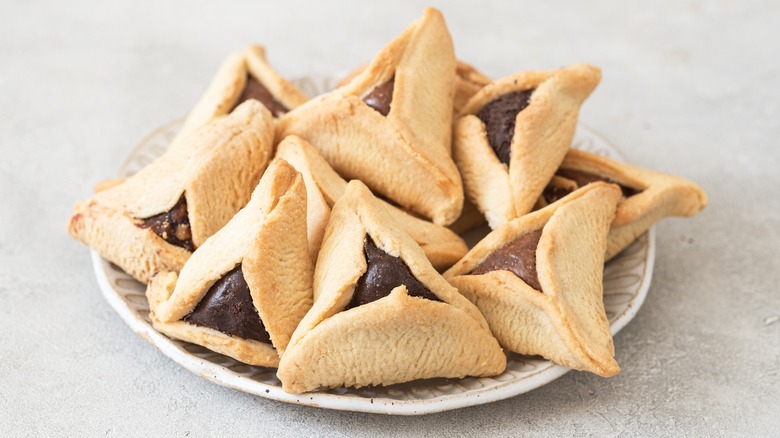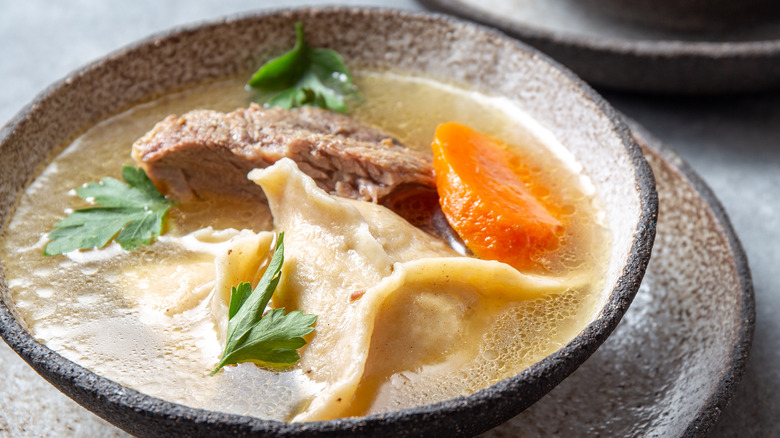Nobody Really Knows Why Triangular Food Is Served On Purim
While Purim may not be the most prominent Jewish spring holiday — that honor would go to Passover, which is celebrated for eight whole days — it is arguably a lot of fun since it features a religious service that resembles a cross between an old-timey melodrama and the "Rocky Horror Picture Show" with congregants yelling, stomping their feet, spinning noisemakers known as gragers or groggers, and even showing up in costume. Still, the best part of the celebration is the food, particularly the triangle-shaped cookies called hamantaschen that have been associated with Purim since the 16th century. (Here's a recipe for jam-filled ones.)
One reason that's often given for why hamantaschen are triangular is that the villain of the Purim story, Haman by name, was reputed to wear a three-cornered hat. The cookies do take their name from this biblical baddie, with "taschen" being the German word for pockets (his pockets were said to be stuffed with ill-gotten gains). The hat story, however, is unlikely as this style wasn't in vogue in ancient Persia. An alternative explanation, also unproven, hinges on the three sides of the triangle symbolizing the big three patriarchs of the Old Testament: Abraham, Isaac, and Jacob. For all we know, the triangle shape was just the most convenient way to partially enclose the filling, which in itself may represent the mysterious ways in which the Lord's been known to work.
Not all Purim foods are triangular
Hamantaschen are probably the best-known of the Purim foods and are also the ones most strongly associated with the story of Haman and his apocryphal tricorn. Some celebrants, however, will try to expand upon the triangle theme with other pointy foods such as spanakopita, samosas, or even Doritos. The only other traditionally triangular Purim food, however, seems to be the dumplings known as kreplach, although these aren't Purim-specific like Hamantaschen since they also feature in Rosh Hashanah, Yom Kippur, and Hanukkah observances.
There are, however, non-triangular Purim recipes that are also part of many people's holiday festivities. One of these, a Russian challah bread called kulichor keylitsch, has a grisly story that belies its sweet flavor. It's made with long braided dough strands that are designed to symbolize Haman's death by hanging. In Morocco, a bread called boyola ungula is decorated with two boiled eggs meant to resemble eyes — Haman's eyes — which are torn out before the bread is eaten. On a less disturbing note, poppy seed-flavored anything is also Purim-appropriate as these were said to be a favorite of Queen Esther's. She may have been Haman's archnemesis, but she's the heroine of the Purim story as she saved the Jewish people from being destroyed by his evil machinations. Even so, a Persian cookie called nan-e berenji manages to impart a sinister intent to poppy seeds, too, since they do double duty by representing Haman's fleas.

